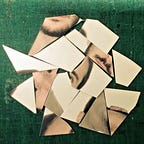A vicious cycle?
Gabriele de Seta, 17–08–15, Urban Nomads, Reflection
During our first day around the Tung Chau flyover, we collected some narratives from the local community: most people said they didn’t care much about the homeless, thought that the relief efforts were good actions but did also contribute to the persistence of the phenomenon, and that these people lived there because they were “lazy” and “didn’t want to find a job”. Even some local charities and community organizations seemed to distance themselves from the question, explaining their focus on different social problems and their difficulties in helping the homeless, who would create more problems than opportunities to be helped, and whom were often described as responsible for their choices. Perhaps the most commonly shared narrative was that of a vicious cycle: the homeless lived around the area because of the availability of drugs, lunch boxes and relief programs, and these efforts contributed in stabilizing the settlement and even attracting more homeless and drug addicts. Less and less of them had day jobs because they could afford to stay there all day and live off different forms of welfare and charity.
How much of this vicious cycle narrative was confirmed by the actual experiences of the Tung Chau Street homeless themselves? One middle-age man sitting shirtless in the park with a half-finished lunch box, a beer and a pack of cigarettes seems quite happy to talk to us, but he isn’t keen on recounting his personal history, becoming very emotional about his past: he doesn’t have a family to go back, and he hasn’t had a day job for long time because occasional work in construction sites is becoming harder and harder to secure; moreover, he has been cheated or mistreated by some Mainland people, and anyway they would soon invade Hong Kong and take this very park away from him as well. Is he a drug user? He says he’s not, but his body tells a different story. How is his life in the park? The public housing residents all know him and treat him well, he says, they even sometimes chat with him and never pay too much attention to him when he’s around. But he had to move his sleeping spot away from his favorite pavilion because other homeless were “disturbing” him, and now he sleeps in a street nearby, in unclear conditions. How much can we know about his everyday life from one hour of chatting? How long has he been on the streets? What happened between him and the other homeless residing in the park that forced him to move out?
It’s our second day of walking around the area, and we start to feel familiar with the geography of the park: a troupe of elderly is singing Chinese opera under the central pavilion, the same guard we interviewed the day before is on duty around the garden, and orderly piles of bags signal the presence of homeless people nearby. We also start noticing how each homeless makes a home out of the architecture of the area: bags are piled in specific places; the Vietnamese occupy a separate area, always sticking together; someone else sleeps in the the space under a small roof; a few elderly men rest under the fountain at the center of the pond. The man we have just talked to waves us goodbye, stands up and goes to check his laundry hanging on the railing, next to a sign warning park visitors not to hang laundry on the railing. Under a nearby pavilion, a yellow poster forbids gambling. Other signs all over the park prohibit smoking.
The vicious cycle narrative shared by many locals could seem a simplified reaction to the persistence of the Tung Chau Street homeless in the area, but it might also point to something else — something much less discussed and talked about, but clearly present: heroin. While other practices are forbidden in the park, and used as a benchmark to maintain order in the housing estate — gambling, smoking, hanging laundry — drug issues are only discussed in private conversations and offhand comments. Yet, heroin is all around Tung Chau Street: a Vietnamese man tells us he regularly smokes it, and that he is currently sitting there to help his addict brother who lives under the bridge. Besides remembering how Hong Kong was better for political refugees before 1997, and wondering if he should go back to Vietnam at some point, he doesn’t lament any specific problem.
Behind the most common complaints voiced by the local community — hygiene and safety — drug use might be the central component tying together all the forms of -lessness we have come across during these first days of research (housing inflation, migratory fluxes, social welfare, bureaucratic disconnects, and relief programs) into a tightly knit wicked problem.
How to break the cycle?
